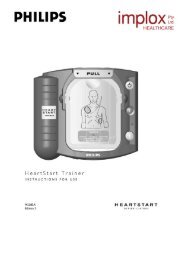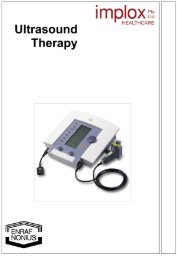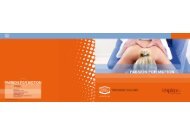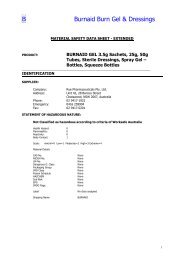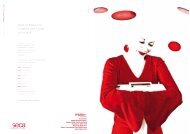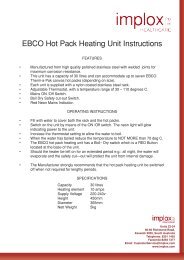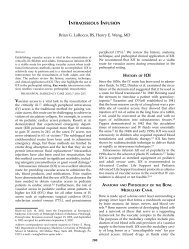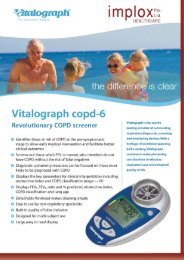Low and medium Frequency Electrotherapy - Implox
Low and medium Frequency Electrotherapy - Implox
Low and medium Frequency Electrotherapy - Implox
Create successful ePaper yourself
Turn your PDF publications into a flip-book with our unique Google optimized e-Paper software.
The Amplitude Modulation <strong>Frequency</strong> (AMF) has no effect on the selective stimulation of thick nerve fibres, but only<br />
determines the frequency with which the nerve fibres depolarize.<br />
Different AMF’s produce different sensations in the patient, enabling the current to be adapted to the sensitivity of the<br />
affected tissues. The choice of AMF is therefore of therapeutic significance.<br />
2.3.3 Wyss<br />
Wyss (18,35) investigated the selectivity f using direct current pulses of different phase times for A <strong>and</strong> B fibres (Fig. 5).<br />
It appeared that A fibres were selectively stimulated by shorter pulses with lower amplitude than those required for<br />
selective stimulation of B fibres. Although no definitive physiological explanation has yet been given for the effects of<br />
the 2-5 current <strong>and</strong> the diadynamic current forms, it is striking that the phase duration of these currents corresponds<br />
closely with that reported by Wyss as being the optimum for the stimulation of thick nerve fibres, even though Wyss<br />
used exponential pulses. The phase duration of the (neo)faradic current forms appears to fit this model extremely<br />
well.<br />
Fig. 5.<br />
The dependence of the threshold voltage on different rise times (for A <strong>and</strong> B fibres) with progressively increasing<br />
pulses, according to Wyss.<br />
2.4 Amplitude (stimulation level)<br />
From the investigations mentioned above it is clear that, in addition to phase duration <strong>and</strong> frequency, the amplitude is<br />
also a determining factor in selective stimulation (Fig. 3, 4 <strong>and</strong> 5). In electrostimulation, reference is made to various<br />
stimulation levels, in order to indicate how high the amplitude should be in order to achieve truly selective stimulation.<br />
When the amplitude in a healthy subject is increased, the following reactions occur:<br />
a. the sensitivity threshold is reached;<br />
b. the motor threshold is reached;<br />
c. the pain threshold is reached; the patient experiences contractions <strong>and</strong> pain (Fig. 6).<br />
This applies to all current types! It is therefore essential to check the patient’s sensitivity before treatment.<br />
C<br />
B<br />
A<br />
B<br />
C<br />
A<br />
A<br />
B<br />
C<br />
sensitivity threshold<br />
motor threshold<br />
pain threshold<br />
10<br />
Fig. 6.<br />
Coherence of stimulation level <strong>and</strong> amplitude.





